|
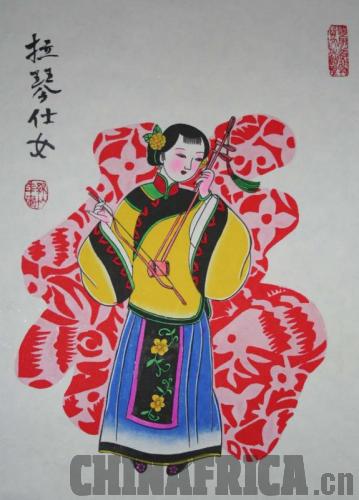 |
|
Mianzhuin Sichuan Province: famous for color painting |
The Lunar New Year is the most important traditional festival for Chinese. During the holiday, posting New Year Paintings as decorations is an indispensable custom in many regions, especially in the countryside.
One of the most popular folk art genres, the New Year Painting has enjoyed a history of more than 1,000 years. It is characterized by concise lines, bright colors, and auspicious and joyous subjects, depicting Chinese gods, such as the Gate God protecting households from evil, the God of Wealth helping attract wealth and prosperity, and images of happy children representing Chinese beliefs of "happiness lying in having many children." Also, scenes from legends and historical tales are reflected in the New Year Painting.
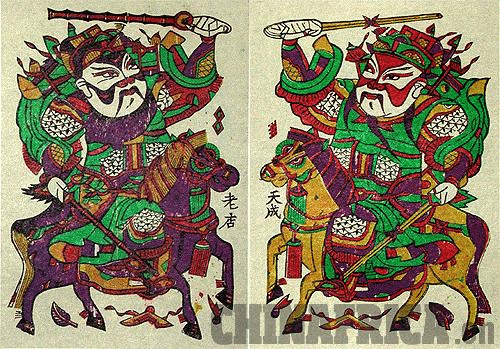 |
|
Zhuxian County in Henan Province: mainly painting Chinese gods, who are exaggerated with big heads and small bodies |
The main method of New Year Painting is woodblock printing. In the Ming (1368-1644) and Qing (1644-1911) dynasties when this art form was at its most popular, workshops producing New Year Paintings could be found nationwide. The most famous production locations include Yangliuqing in Tianjin Municipality, Taohuawu, Jiangsu Province, Fengxiang, Shaanxi Province, and Wuqiang, Hebei Province.
However, despite its popularity in the past, the New Year Painting is being squeezed out of the market due to its high production costs. Since the beginning of the 1990s, the production and sales of the traditional art form has been in decline, threatening its existence. Tai Liping, a woodblock New Year Painting artist from Fengxiang, is one of those who have witnessed the decline.
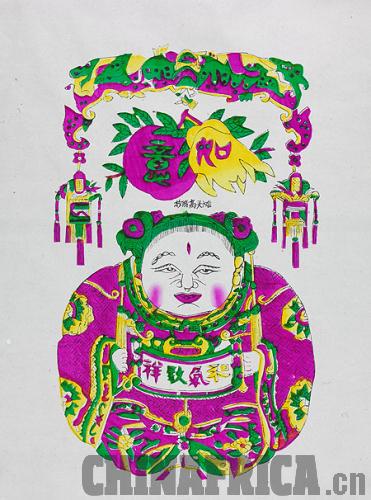 |
|
Tantou in Hunan Province: thickset figures, bright colors |
Tai's family is the most well-known and time-honored producer of New Year Paintings in Fengxiang, with a history of more than 500 years. In previous peak periods more than 30 households in the family worked on the production, with sales volumes reaching several millions every year. But now only Tai and his wife work on production, which has dropped to 10,000 paintings and several thousand sold every year. Despite this drop, Tai, the 20th scion of the family, never thinks of abandoning the craftsmanship passed from generation to generation.
In 2006, Fengxiang New Year Paintings and other schools of the art genre were listed as national intangible cultural heritage. Tai was nominated as the representative of preserving the art. To assist with this he receives an annual subsidy of 8,000 yuan ($1,271). To make the art widely known, he participated in various exhibitions and cultural exchange activities at home and abroad, where he performs live shows of drawing the New Year Paintings.
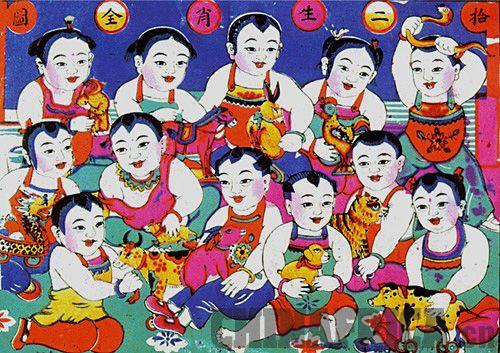 |
|
Weifangin Shandong Province: full composition, concise lines and plain style |
Because of his efforts, the ancient folk handicraft is winning more and more recognitions and praises. During the process, Tai said he has grasped a deeper understanding of the charm of the art and hopes it will be ranked alongside other major Chinese art forms.
The development of Fengxiang woodblock New Year Paintings mirrors that of traditional Chinese New Year paintings. In recent years, many schools of the art genre with distinctive local features were listed as national or local intangible cultural heritage and received policy and financial support from the government. Special museums have also been set up in many cities to showcase the paintings.
|
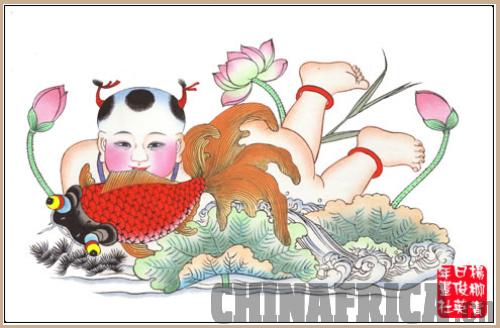
|
|
Yangliuqing in Tianjin: neat lines, bright colors and joyous subjects |
There are other folk artists like Tai who work on protecting and spreading the traditional New Year Painting. With their efforts, this Chinese folk handicraft is attracting more and more sales from lay people and collectors.
|